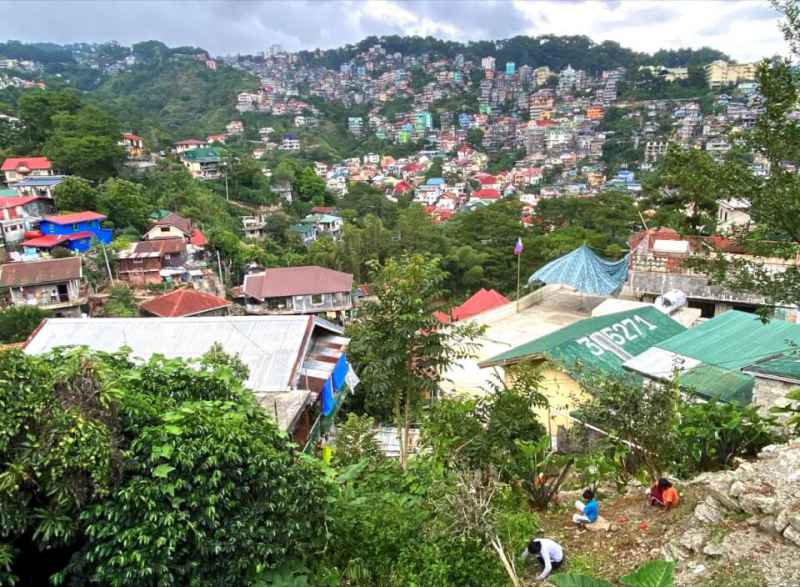‘Saving Baguio from urban decay’

BAGUIO CITY (July 11, 2022)— A mission to save Baguio City from urban decay has been launched two weeks ago by Mayor Benjamin Magalong.
Baguio City, whose environment has been compromised and carrying capacity upset, turns 113 years old a month from now, and it is “hurtling towards urban decay”, he said.
A “change of mindset” to veer away from old destructive ways in the city, he said, is important, adding, “we have to come to terms now with difficult realities and decisions that will require all of us to adjust and to change the usual way of doing things. We have to divest ourselves from “nakasanayan gaminen”, from “kastoy met idi”, from “nagbiit lang idi”.
He stressed, “it is about time that we need to change that old mindset because if we are not going to act now, urban decay will be irreversible.”
Results of the 2019 urban carrying capacity study showed that Baguio City has breached the natural carrying capacity of its environment and that urban decay had manifested starting 20 years ago. The study showed that the city has breached the carrying capacity threshold of its Urban Road Area in 1988 as the standard allocation of 40 square meters per person to only 20.
Way back in 1994, the solid waste collection exceeded the 52,000 metric ton capacity, and now, 95,000 metric tons are being collected costing the government P133 million per year, the study also showed.
In 2002, the demand for water in the city exceeded the supply from the standard of 18.5 cu.m. of water per person to only 14.5 cubic meters now.
The problem with liquid waste management started in 2007 when the city’s sewage treatment plant started operating beyond its 8,500 cu.m. per day capacity.
Baguio City’s ope. spaces have diminished starting 2008 while land for development had been reduced significantly starting in 2010.
Baguio’s forest cover, the same study also showed, is now at 22.68 percent down from 30 percent in 2012.
Busol watershed from 82 hectares has shrunk to only 45 hectares and Buyog from 19 hectares to just 7 hectares. The green cover has also diminished starting in 2016.
“The challenge is not to just reverse urban decay but to root out the causes, implement immediate and strategic solutions, and eventually put us on track toward the Better Baguio we long for,” Magalong said in his inaugural on his second term as Baguio’s chief executive last June 30.
The city has begun developing ways and strategies to overcome and mitigate the problem, and exploring what would be its best strategy for population management vis-à-vis the plan to become a livable city which is the first step to putting back allowable densities in the different parts of the City, Magalong explained. “We are currently auditing the city, its people, and resources, to develop a viable and equitable solution through an updated land use and zoning code.”
Magalong said that they have developed a digital twin of Baguio City, a dynamic, up-to-date virtual model of its physical assets. “This virtual environment shall be the platform where planning, decision-making, and community engagements for the future will take place,” he cited.
He urged the cooperation of all sectors: “Only when we come together with the 4-Cs of good governance — cooperation, collaboration, coordination, and communication — would we be able to solve the City’s problems. We, all together, need to be proactive and accepting of a much-needed transformation.”
Magalong’s 16-point core agenda continues to be his blueprint in achieving such “saving Baguio from urban decay mission”: Speeding up Government Actions; Revitalizing the Environment; Innovating Peace and Order Conditions; Aggressive Traffic Management; Responsive Education Programs; Empowering the Youth; Expanding Health and Social Services; Responsible Tourism; Enlivened Culture, Arts, Crafts, and Heritage; Market Modernization; Efficient Disaster Management; Empowered and Accountable Barangay Governance; Strengthened Livelihood and Entrepreneurial Services; Poverty Reduction; Resolution of Indigenous People Land Issues; and Happiness.
“The impact of our actions may not be felt in the short term, but then again, it is for the quality of life of the young people, our children and our children’s children, that we are working for. This should be our legacy to the next generation,” he said.
Artemio A. Dumlao
JUST IN
ELDERLY SOLON PUSHES SENIORS PENSION BILL
July 3, 2025
36,000 BENGUET VOTERS ASK COMELEC TO PROCLAIM YAP
June 4, 2025
PANGASINAN COLLEGE TO ACCEPT 700 NEW SCHOLARS
June 2, 2025
YAP EYEING COUNTER CHARGE AFTER 6TH AND 7TH DQ CASES
May 28, 2025





